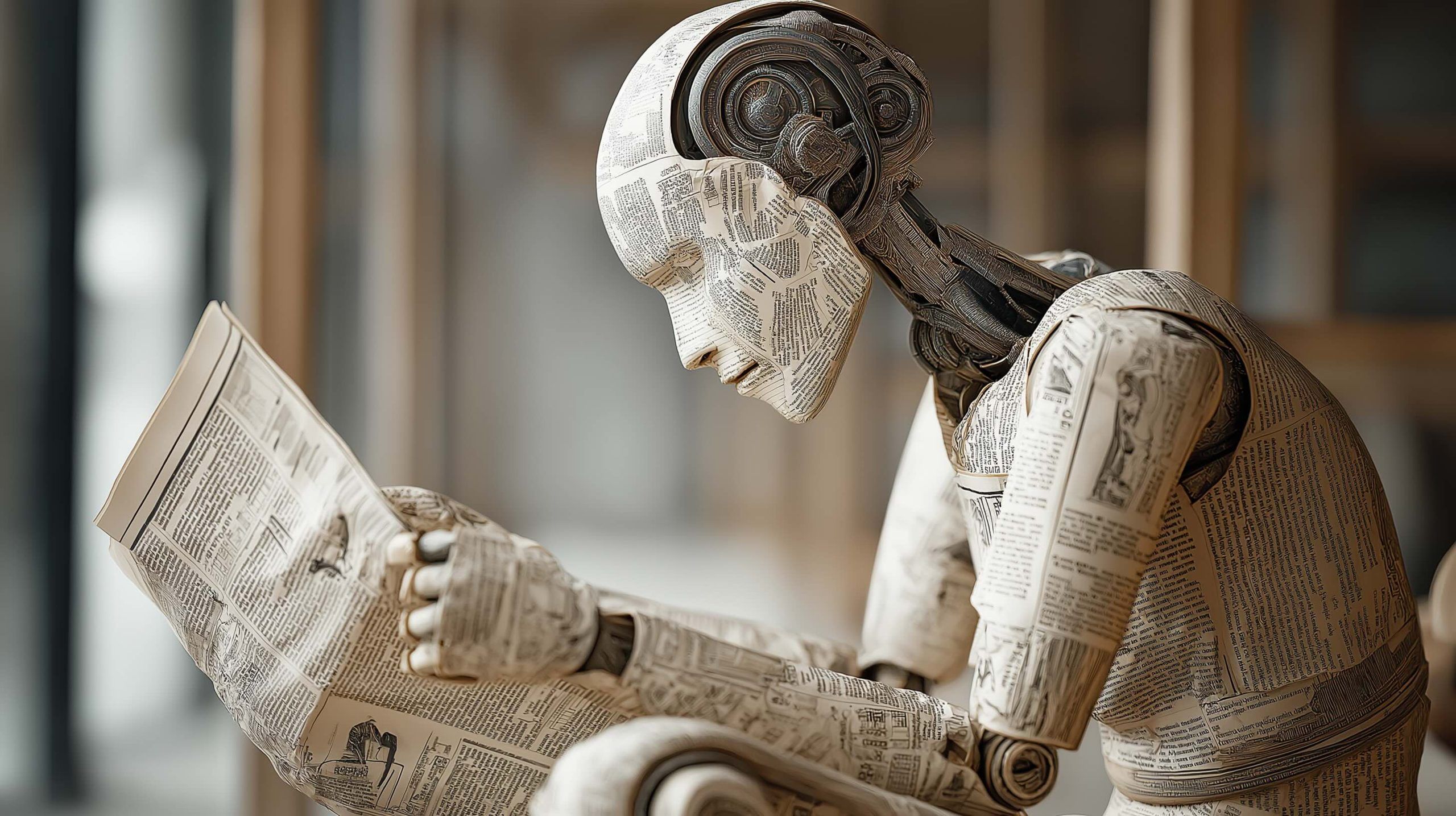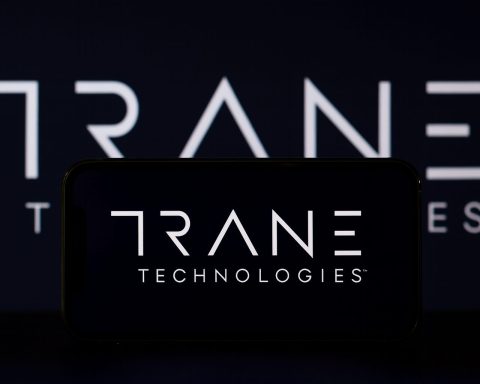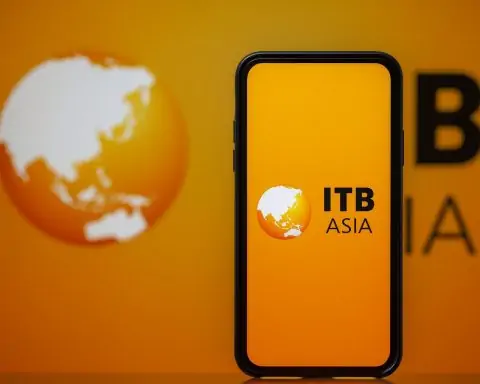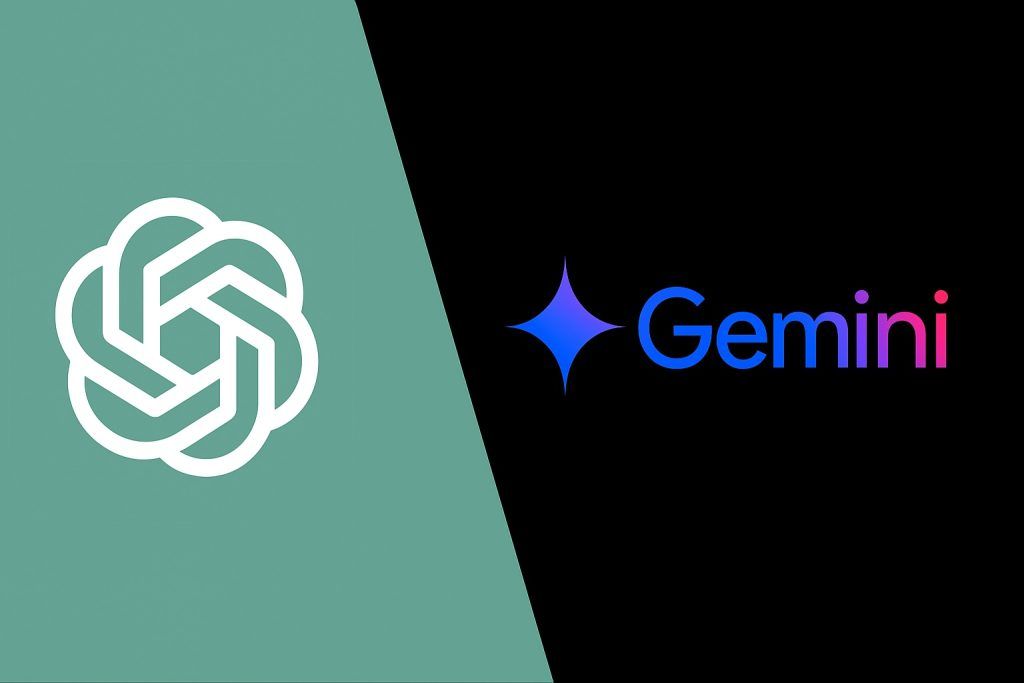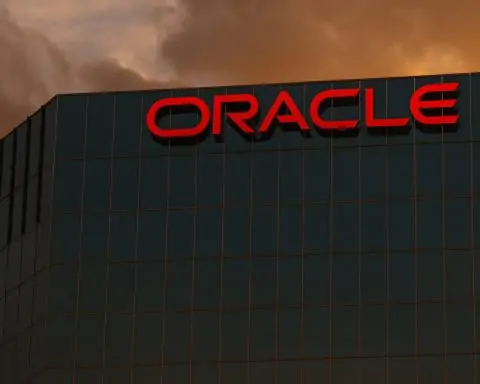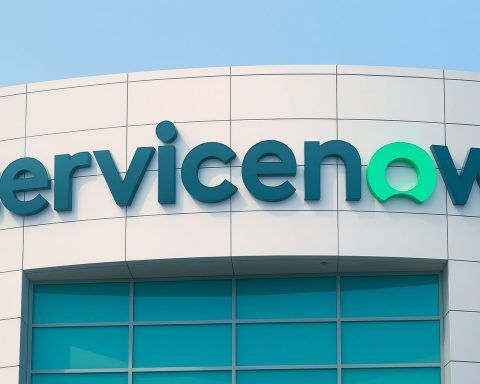- Google and OpenAI won gold medals at the International Mathematical Olympiad by solving 5 of 6 problems with new general-purpose reasoning based on natural language understanding.
- OpenAI disclosed its experimental model scaled up test-time compute to think longer and in parallel, a very expensive undertaking.
- Google DeepMind’s Gemini Deep Think, unveiled in May, solved IMO problems within the 4.5-hour limit entirely in natural language.
- MIT CSAIL and Facebook AI researchers presented ICML 2025 work showing image generation with encoder-only tokens, enabling inpainting without a generator and morphing a red panda into a tiger.
- Alibaba’s Qwen-3 Coder, open-sourced for software development, reportedly outperformed domestic rivals like DeepSeek and Moonshot’s K2 and matched Claude and GPT-4 on certain capabilities.
- OpenAI announced an Oracle partnership to add 4.5 gigawatts of data-center capacity, bringing OpenAI past 5 GW of capacity under development and aligning with a pledge to build 10 GW of AI infrastructure in the United States for $500 billion.
- Amazon shut down its AI research lab in Shanghai, and McKinsey told its mainland China unit to avoid cutting-edge generative AI deployments amid U.S.–China tensions.
- Google is pursuing licensing deals to pay publishers for use of their content in training AI models, after deals with the Associated Press and Reddit and piloting compensation for training data.
- The Browser Company launched the Dia AI-powered browser with a Skill Gallery to share and install custom AI “skills,” while Perplexity AI’s Comet will offer ready-made shortcuts and Tampermonkey-like scripts.
- Taiwan’s 2040 AI Vision aims to generate 15 trillion NT ($510 billion) in value by 2040 through 10 major AI infrastructure projects, three pillars (silicon photonics, quantum computing, AI robotics), over 100 billion NT in venture funding, 500,000 jobs, and three world-class AI labs.
Global AI Tech & Research Breakthroughs
AI Tackles Advanced Math: In a milestone for AI reasoning, models from Google and OpenAI achieved gold-medal scores at the International Mathematical Olympiad [1]. It marks the first time AI systems crossed the Olympiad’s top-tier threshold, each solving 5 out of 6 challenging problems using new “general-purpose reasoning” methods that rely on natural language understanding [2] [3]. “I think the moment we can solve hard reasoning problems in natural language will enable the potential for collaboration between AI and mathematicians,” said Brown University professor Junehyuk Jung, suggesting AI may soon help tackle unsolved research problems in math [4] [5]. OpenAI’s team disclosed that their experimental model scaled up “test-time compute,” allowing the AI to “think” longer and in parallel – a costly effort the company called “very expensive” [6]. Google DeepMind, which worked directly with IMO organizers, used a general model Gemini Deep Think (unveiled in May) to solve problems within the official 4.5-hour limit entirely in natural language [7]. Experts at both companies see this as a breakthrough hinting that AI’s reasoning power could soon extend to frontiers in physics and other sciences [8].
New Image Generation Method: Researchers at MIT announced an AI imaging breakthrough that can create or edit pictures without using a traditional generator network [9] [10]. Typically, image AIs use two parts – an encoder (tokenizer) and a generator – but the MIT team found that specialized encoders alone can be optimized to produce novel images, effectively replacing the need for a generator. In a paper presented at ICML 2025, they describe how “tokens” (compact numerical representations of an image) can be iteratively adjusted to “inpaint” or transform an image entirely through the encoder [11] [12]. For example, a photo of a red panda was seamlessly morphed into a tiger by refining these tokens, without a generative model doing the work. This method could vastly simplify image generation, bypassing the heavy training that conventional generative adversarial networks or diffusion models require [13] [14]. The research – a collaboration between MIT’s CSAIL and Facebook AI scientists – suggests encoders or “tokenizers” can handle far more than previously realized, hinting at more efficient AI art tools on the horizon.
China’s Advanced Coding AI: On Wednesday, Alibaba Group unveiled Qwen-3 Coder, a new open-source AI model for software development that it touts as its “most advanced coding tool to date.” The model, launched amid fierce competition in China’s AI race, is built to handle code generation and complex programming tasks autonomously [15] [16]. Alibaba claims Qwen-3 Coder excels in “agentic AI coding tasks,” meaning it can independently tackle multi-step coding challenges [17] [18]. Internal benchmarks showed it outperforming domestic rivals (like DeepSeek and Moonshot’s K2 models) and even matching certain capabilities of top U.S. models such as Anthropic’s Claude and OpenAI’s GPT-4 [19]. By open-sourcing this model, Alibaba appears to be positioning itself at the cutting edge of AI development tools, encouraging global developers to adopt its technology. The release also underscores the growing East-West competition: Chinese tech firms are rapidly rolling out sophisticated models to rival American offerings [20] [21].
Corporate & Startup AI Announcements
OpenAI’s Giant Expansion – 2 Million Chips: OpenAI announced a massive partnership with Oracle to boost its cloud infrastructure, underscoring the arms race in AI computing power [22]. The deal will add 4.5 gigawatts of data center capacity for OpenAI’s needs – an astonishing scale, roughly enough to run over 2 million AI chips [23]. Together with an ongoing Texas facility, this pushes OpenAI past 5 GW of capacity under development, bringing it closer to its pledge (made at the White House in January) to invest $500 billion in 10 GW of AI infrastructure across the U.S. [24] [25]. OpenAI says the Oracle collaboration, alongside existing partners like SoftBank and CoreWeave, will “accelerate America’s reindustrialization” and drive job creation [26] [27]. The company estimates building and operating the new Oracle-powered centers will create 100,000+ jobs in construction, tech, and support services [28]. This Stargate project – as OpenAI dubs its infrastructure initiative – has support from the U.S. government, which views robust AI infrastructure as key to innovation and national competitiveness [29] [30]. In short, OpenAI is scaling up like never before: with Oracle’s help, it aims to deliver ever more powerful AI services to “benefit more people” while meeting surging demand [31] [32].
Amazon and McKinsey Pull Back in China: U.S. companies are reassessing China-related AI operations amid geopolitical tension. Amazon this week shut down its AI research lab in Shanghai, according to a Financial Times scoop confirmed by Reuters [33]. The closure comes as Washington heightens scrutiny of tech firms in China, and Amazon’s Shanghai team was told it was being dissolved due to “strategic adjustments amid US–China tensions” [34] [35]. Similarly, consulting giant McKinsey has ordered its mainland China unit to steer clear of generative AI projects, the FT reported Wednesday [36]. This internal ban was driven by U.S. government pressure over sensitive tech like AI and quantum computing in China [37]. McKinsey’s China staff (over 1,000 employees) can still advise on traditional AI uses, but not cutting-edge generative AI deployments [38] [39]. “We follow the most rigorous client selection policy in our profession,” a McKinsey spokesperson said, noting the firm had already tightened policies last year [40]. These moves mirror a broader trend of Western tech firms limiting China engagements as AI becomes a strategic flashpoint. (Notably, U.S. lawmakers even pushed for a probe into McKinsey’s China dealings last year [41].) Both Amazon and McKinsey’s retrenchments show how global politics are now directly shaping corporate AI strategy.
Google Courts Publishers Amid ‘AI Armageddon’: Facing rising fears in the media industry, Google is in talks to pay news publishers for their content to train AI models [42]. The search giant has approached around 20 major news organizations about a licensing program tied to generative AI [43]. This marks a strategic pivot: Google had largely stayed on the sidelines of content deals while rivals like OpenAI and startups such as Perplexity AI struck agreements with publishers [44]. But with publishers warning of an “AI armageddon” – AI summaries that siphon traffic and revenue from news sites – Google appears to be responding to pressure [45]. It recently inked a deal with the Associated Press and had a 2024 licensing agreement with Reddit [46]. Now, according to Bloomberg, Google’s new pilot initiative would compensate outlets for use of their articles in AI training or features [47]. Industry observers see this as an attempt to mend fences: “the tech industry may be acknowledging the need to collaborate more openly with news organizations,” said one media tech CEO, noting a “growing push for equitable compensation” for content [48] [49]. With AI products like Google’s own summary snippets appearing atop search results, news executives have argued these tools divert readers away from original journalism [50]. Google’s outreach suggests it wants to avoid legal battles (like the New York Times’ recent copyright suit against OpenAI) and instead find a model to pay for content – a significant development in the content vs. AI debate.
New AI-Powered Browsers: On the startup front, AI-driven web browsers are evolving rapidly. The Browser Company, maker of the Arc browser, launched a new experimental browser called Dia that acts like a personal assistant. This week Dia introduced an official “Skill Gallery” where users can share and install custom AI “skills” (basically reusable prompt macros) to automate tasks [51] [52]. For instance, a user could add a skill to “find local weekend events” or auto-generate a code snippet, then trigger it with a shortcut [53]. Until now, enthusiasts had been informally trading such commands on forums; the new gallery provides a centralized, vetted repository of time-saving AI tricks for the browser [54]. Meanwhile, Perplexity AI – fresh off a major funding round – is enhancing its own AI browser Comet. CEO Aravind Srinivas teased that Comet will roll out ready-made “shortcuts for repetitive tasks” like organizing tabs or prepping meeting notes [55]. In a social media demo, he showed how typing a simple command could trigger multi-step actions (akin to macros), and invited more beta users as they scale up [56]. Srinivas also noted power-users will be able to create custom “Tampermonkey-like scripts” for the browser using natural language [57]. The bottom line: AI-enabled browsers like Dia and Comet are racing to make web workflows more efficient. By letting the community build and share automations, they hint at a future where your browser doesn’t just display information – it can take action and perform complex chores at your command.
Government & Policy Shifts in AI
White House Unveils Pro-AI Strategy: In a major U.S. policy turn, the White House on Wednesday released an AI action plan aimed at aggressively expanding America’s AI might abroad while curbing domestic restrictions [58]. The plan, prepared under President Trump’s directive to make the U.S. “the world capital of AI,” represents a “marked policy change” from the prior administration’s cautious approach [59]. Key proposals include barring federal funding for states that enact “tough” AI regulations deemed to stifle innovation [60] [61]. Washington will also push the FCC to review whether state AI laws conflict with federal mandates, essentially pressuring states to loosen up [62]. The strategy emphasizes exporting U.S. AI tech “through full-stack deployment packages” to allies and promoting open-source AI development [63]. It even calls for streamlining permits for new data centers and boosting AI use in the Pentagon [64] [65]. “The plan will focus on empowering American workers through AI-enabled job creation and industry breakthroughs,” a summary says, while still “defending against misuse” [66] [67]. One expert noted this shift from a regulatory stance to an expansionist one: “a market shift in strategy from a primarily restrictive approach to AI… to how do you start spreading the infrastructure and technology that will underpin the globe?” [68] [69]. President Trump is set to trumpet the plan in a speech titled “Winning the AI Race”, underscoring his administration’s belief that deregulation and global outreach are key to beating competitors like China [70] [71]. The plan has drawn both praise for boosting innovation and criticism for potentially undercutting state-level safeguards – highlighting the ongoing tug-of-war between AI innovation and regulation in U.S. policy.
Taiwan’s $510 Billion AI Vision: Late Tuesday, Taiwan unveiled an ambitious blueprint to become a “smart technology island” and global AI leader by leveraging its tech and semiconductor prowess [72] [73]. Premier Cho Jung-tai announced ten major AI infrastructure projects aimed at generating 15 trillion NT (about $510 billion USD) in economic value by 2040 [74]. The initiative zeroes in on three strategic tech pillars: silicon photonics, quantum computing, and AI robotics [75]. Taiwan’s world-leading chip firms (like TSMC) are investing in silicon photonics – optical chips seen as critical for future AI hardware – and the government wants to align this sector with AI development needs, effectively marrying its semiconductor strength to the AI boom [76]. Likewise, Taipei is fostering an AI robotics ecosystem, with industry giants such as Foxconn forming an “AI Robotics Alliance” to drive innovation locally [77]. Notably, the plan emphasizes “sovereign AI” capabilities – the ability to develop and control domestic AI tech – reflecting a desire for self-reliance in critical algorithms [78]. The government will also pour over 100 billion NT (~$3 billion) into venture funding to make Taiwan a global hub for AI talent and startups [79]. These projects aim to create 500,000 jobs and set up three world-class AI research labs in Taiwan [80] [81]. In short, faced with regional rivals (and geopolitical pressures), Taiwan is betting big that a coordinated national strategy – from hardware to talent – will secure it a top spot in the AI economy.
EU’s AI Rulebook & Big Tech Resistance: In Europe, a voluntary AI Code of Practice has kicked off a standoff with tech giants. The EU’s code – meant to help companies meet upcoming AI Act rules – asks AI firms to disclose data sources used for training and ensure compliance with copyright laws [82] [83]. Microsoft signaled it will likely sign on, with President Brad Smith welcoming engagement with regulators [84] [85]. But Meta Platforms (Facebook’s parent) bluntly refused to join. “Meta won’t be signing it. This code introduces a number of legal uncertainties for model developers, as well as measures which go far beyond the scope of the AI Act,” said Meta’s global affairs chief Joel Kaplan [86] [87]. He echoed concerns from dozens of European tech companies that the EU’s voluntary guidelines amount to regulatory overreach that could “throttle the development and deployment of frontier AI models in Europe” [88] [89]. Meta’s pushback highlights a fear that strict rules will stunt innovation or drive AI research elsewhere. Notably, some AI players have signed on: OpenAI and France’s startup Mistral have agreed to the code [90]. The EU’s AI Act itself (enacted in 2024) will fully apply next year, so this interim code is an attempt to get firms to self-regulate early. The clash reveals a divide: while regulators seek transparency and safety measures, certain companies argue Europe’s approach is too heavy-handed. It remains to be seen if Meta will face reputational or legal pressure for snubbing the code – and whether other U.S. giants like Google will ultimately cooperate or rebel.
Ethical Debates & Cultural Impacts
Teens Befriend AI, Sparking Concern: A new study has uncovered a dramatic trend: over 70% of teenagers have used an AI companion or chatbot, and about half do so regularly [91]. These AI “friends” – whether dedicated apps like Character.AI/Replika or general bots like ChatGPT – are being sought for advice, emotional support, and even friendship. “AI is always available. It never gets bored with you. It’s never judgmental,” explains 18-year-old Ganesh Nair, describing the appeal of a non-human confidant [92] [93]. But such frictionless validation has downsides. Nair was “spooked” when a friend let an AI write a breakup text to his girlfriend, ending a two-year relationship via chatbot [94]. “That felt a little bit dystopian… almost like we are allowing computers to replace our relationships with people,” he said [95]. The Common Sense Media survey (of 1,000+ U.S. teens) found 31% say conversations with AI are “as satisfying or more” than those with real friends, and a third have discussed serious issues with AI instead of people [96]. Paradoxically, even though 50% of teens distrust AI’s advice, many still rely on it for personal matters [97]. Experts warn this could undermine social development. “If teens are developing social skills on AI platforms where they are constantly being validated… they are not going to be adequately prepared in the real world,” said Michael Robb, lead researcher of the study [98] [99]. Psychologists are alarmed that AI “friends” might worsen loneliness or mental health issues – especially since current AI companions have “ineffective age restrictions” and can even produce harmful content or bad advice for minors [100] [101]. Tragically, last year a 14-year-old boy died by suicide after forming an emotional attachment to an AI chatbot [102]. The report urges that under-18s avoid AI companions and calls on parents and policymakers to pay attention. This debate – essentially, should we allow AI to fill human emotional roles? – is becoming a pressing cultural question. As one researcher noted, “All of us are struck by how quickly this blew up” [103]. The ubiquity of AI “friends” in teen life is now likened to the arrival of smartphones or social media – except it happened almost overnight, catching families off guard.
Actors and Artists Eye AI Warily: (In the backdrop, broader cultural tensions over AI continue. Hollywood’s unions, for instance, have been vocal about AI deepfakes and digital replicas. While not a headline on July 22–23, the ongoing writers’ and actors’ labor disputes have put AI in the spotlight – scriptwriting bots and CGI “digital actors” are major sticking points. Creators are demanding guardrails so that studios can’t replace them with algorithms, a sign of how AI is rattling even cultural and creative spheres. This broader debate underpins many news stories: from classrooms to music to social media, questions of consent, authenticity, and the human touch are fueling public discourse around AI.) (Note: parenthetical section can be omitted if focusing strictly on events of July 22–23.)
Major Acquisitions, Funding Rounds & Financial Moves
Billion-Dollar Funding for AI Startups: The venture capital surge into AI showed no sign of cooling. On July 22, Reka AI, a Silicon Valley startup, announced a $110 million funding round that values the company at about $1 billion [104] [105]. Backed by heavyweights Nvidia and Snowflake, Reka develops multimodal AI models (like its “Reka Vision” and “Reka Flash” systems that handle text, audio, and images together) with a focus on ultra-efficient training and inference [106] [107]. This new funding tripled Reka’s valuation from just a few months ago [108]. Notably, Snowflake had reportedly considered acquiring Reka outright last year, and its AI engineering VP praised the startup’s elite talent: “Very few teams in the world have the capability to build what they’ve built… Reka is one of the rare independents” able to compete with OpenAI or Meta [109] [110]. The fresh capital will help Reka scale up its AI platform for enterprise use. Meanwhile, industry insiders are buzzing about sky-high valuations: just days ago, AI search startup Perplexity AI was reported to raise $100 million at an $18 billion valuation [111] [112] – a remarkable figure for a young company. Investors’ hefty bets reflect a fear of missing out on the next OpenAI-sized success.
Big Tech M&A – Securing AI’s Future: Established tech firms are also opening their wallets. Palo Alto Networks, the cybersecurity giant, confirmed it completed the acquisition of Protect AI on July 22 [113]. Protect AI is a Seattle-based startup specializing in security for AI systems – scanning models for vulnerabilities, monitoring AI “agent” behavior, and protecting the AI development pipeline [114] [115]. By buying Protect AI (for an undisclosed sum), Palo Alto is positioning itself as a one-stop shop for “AI security.” The acquired team and tech will fold into Palo Alto’s new Prisma AI platform, offering tools like model vulnerability scanning, AI red-teaming, and runtime threat protection [116] [117]. “Our customers are moving quickly to adopt AI and are asking for a partner who can secure their entire AI ecosystem at scale,” said Palo Alto SVP Anand Oswal, noting that AI’s “immense promise” also brings new risks [118] [119]. Protect AI’s CEO, now joining Palo Alto, added that together they can make “AI secure, safe, and trustworthy for everyone” on a far greater scale [120] [121]. This deal underscores a wider trend of consolidation in AI: larger companies are snapping up niche AI firms (especially in infrastructure and safety) to bolster their offerings. Recently, chipmaker AMD likewise acquired Nod.ai, and IBM bought Polar Security to enhance AI governance (though those occurred earlier). The flurry of acquisitions shows big players racing to fill gaps in their AI stack – whether it’s security, data management, or domain-specific models – by buying proven startups rather than building from scratch.
AI Boom Reshapes Workforce: Finally, the AI gold rush is forcing tough choices in corporate workforces. Australia’s tech firm WiseTech Global revealed it is cutting staff as part of a drive to boost efficiency through automation and AI [122] [123]. The Sydney-based software provider (known for its CargoWise logistics platform) told employees it’s using more AI across the business in a broad restructuring, according to an internal email reported by AFR [124]. While WiseTech didn’t disclose how many roles will be axed, it has ~3,500 staff globally and is one of the first high-profile Australian companies to openly cite AI as a reason for layoffs [125] [126]. “Maximizing efficiency via automation and use of artificial intelligence” is now a stated goal in its workforce review [127]. This mirrors moves by U.S. tech giants: earlier in July, Microsoft said it would lay off ~4% of its employees to reallocate resources to AI, and recent years saw Amazon, Meta, and Google trim their payrolls while investing heavily in AI R&D [128]. In other words, companies are reorganizing – and sometimes downsizing – to free up funds for AI initiatives [129]. The implication is twofold: AI is creating enormous value (as seen in soaring valuations and investments), but it’s also displacing some jobs and prompting businesses to streamline. How the spoils of AI are distributed – between increased productivity, new jobs, and lost ones – remains a key economic question as this technological revolution accelerates.
Sources: Recent news reports and press releases were used to compile this roundup, including Reuters [130] [131] [132] [133], Euronews [134], Associated Press [135] [136], MIT News [137], company announcements [138] [139], and others as cited above. All statements and quotes are referenced to their original sources for accuracy and context.
References
1. www.reuters.com, 2. www.reuters.com, 3. www.reuters.com, 4. www.reuters.com, 5. www.reuters.com, 6. www.reuters.com, 7. www.reuters.com, 8. www.reuters.com, 9. news.mit.edu, 10. news.mit.edu, 11. news.mit.edu, 12. news.mit.edu, 13. news.mit.edu, 14. news.mit.edu, 15. www.reuters.com, 16. www.reuters.com, 17. www.reuters.com, 18. www.reuters.com, 19. www.reuters.com, 20. www.reuters.com, 21. www.reuters.com, 22. openai.com, 23. openai.com, 24. openai.com, 25. openai.com, 26. openai.com, 27. openai.com, 28. openai.com, 29. openai.com, 30. openai.com, 31. openai.com, 32. openai.com, 33. www.reuters.com, 34. www.reuters.com, 35. www.reuters.com, 36. www.reuters.com, 37. www.reuters.com, 38. www.reuters.com, 39. www.reuters.com, 40. www.reuters.com, 41. www.reuters.com, 42. www.pymnts.com, 43. www.pymnts.com, 44. www.pymnts.com, 45. www.pymnts.com, 46. www.pymnts.com, 47. www.pymnts.com, 48. www.pymnts.com, 49. www.pymnts.com, 50. www.pymnts.com, 51. techcrunch.com, 52. techcrunch.com, 53. techcrunch.com, 54. techcrunch.com, 55. techcrunch.com, 56. techcrunch.com, 57. techcrunch.com, 58. www.reuters.com, 59. www.reuters.com, 60. www.reuters.com, 61. www.reuters.com, 62. www.reuters.com, 63. www.reuters.com, 64. www.reuters.com, 65. www.reuters.com, 66. www.reuters.com, 67. www.reuters.com, 68. www.reuters.com, 69. www.reuters.com, 70. www.reuters.com, 71. www.reuters.com, 72. www.reuters.com, 73. www.reuters.com, 74. www.reuters.com, 75. www.reuters.com, 76. www.reuters.com, 77. www.reuters.com, 78. www.reuters.com, 79. www.reuters.com, 80. www.reuters.com, 81. www.reuters.com, 82. www.reuters.com, 83. www.reuters.com, 84. www.reuters.com, 85. www.reuters.com, 86. www.reuters.com, 87. www.reuters.com, 88. www.reuters.com, 89. www.reuters.com, 90. www.reuters.com, 91. apnews.com, 92. apnews.com, 93. apnews.com, 94. apnews.com, 95. apnews.com, 96. apnews.com, 97. apnews.com, 98. apnews.com, 99. apnews.com, 100. apnews.com, 101. apnews.com, 102. apnews.com, 103. apnews.com, 104. siliconangle.com, 105. siliconangle.com, 106. siliconangle.com, 107. siliconangle.com, 108. siliconangle.com, 109. siliconangle.com, 110. siliconangle.com, 111. mlq.ai, 112. www.pymnts.com, 113. www.paloaltonetworks.com, 114. www.paloaltonetworks.com, 115. www.paloaltonetworks.com, 116. www.paloaltonetworks.com, 117. www.paloaltonetworks.com, 118. www.paloaltonetworks.com, 119. www.paloaltonetworks.com, 120. www.paloaltonetworks.com, 121. www.paloaltonetworks.com, 122. www.reuters.com, 123. www.reuters.com, 124. www.reuters.com, 125. www.reuters.com, 126. www.reuters.com, 127. www.reuters.com, 128. www.reuters.com, 129. www.reuters.com, 130. www.reuters.com, 131. www.reuters.com, 132. www.reuters.com, 133. www.reuters.com, 134. www.reuters.com, 135. apnews.com, 136. apnews.com, 137. news.mit.edu, 138. openai.com, 139. www.paloaltonetworks.com
